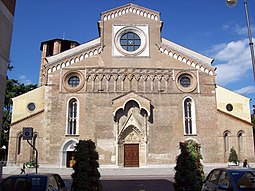
The Patriarchate of Venice, also sometimes called the Archdiocese of Venice, is a Latin Church ecclesiastical territory or patriarchal archdiocese of the Catholic Church in Venice, Italy. In 1451 the Patriarchate of Grado was merged with the Bishopric of Castello and Venice to form the Archdiocese of Venice.
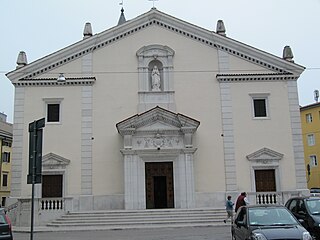
The Archdiocese of Gorizia (Latin: Archidioecesis Goritiensis is a Latin archdiocese of the Catholic Church in Italy. The archiepiscopal see of Gorizia was founded in 1751 when the Patriarchate of Aquileia was abolished, and its territory divided between two new dioceses, Udine and Gorizia. The diocese of Gorizia was suppressed in 1788 for the creation of the Diocese of Gradisca and re-established in 1791 as the Diocese of Gorizia e Gradisca. It was raised again to a metropolitan archdiocese in 1830.
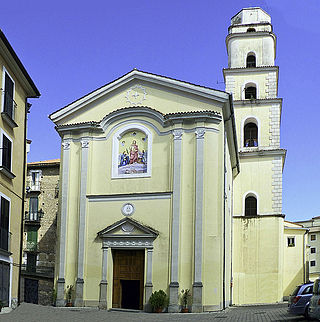
The Diocese of Vallo della Lucania is a Latin Church diocese of the Catholic Church in Campania, has existed under this name since 1945. It is a suffragan of the Archdiocese of Salerno-Campagna-Acerno.

The Diocese of Concordia-Pordenone is a Latin diocese of the Catholic Church situated in northeastern Italy, at the northern end of the Adriatic Sea, between Venice and Udine. Since 1818, Concordia Veneta, has been a suffragan of the Archdiocese of Venice. Bishop Andrea Casasola attended the Provincial Council of the Provincia Veneta in October 1859 as a suffragan of the Patriarch of Venice, Cardinal Giuseppe Luigi Trevisanato. The name of the diocese was changed to its present form in 1971.
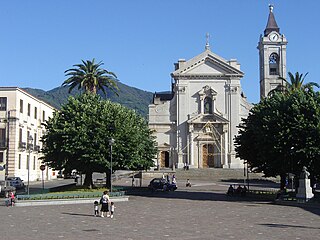
The Diocese of Oppido Mamertina-Palmi is a Latin diocese of the Catholic Church in southern Italy, existing under that name since 1979. Historically it was the Diocese of Oppido Marmertina (Oppidensis). It is a suffragan see of the Archdiocese of Reggio Calabria.
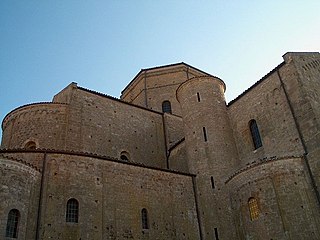
The Archdiocese of Acerenza is a Latin archdiocese of the Catholic Church in southern Italy, included in the provinces of Lecce and Potenza. It has existed as a diocese since the fourth or fifth centuries. In the 11th century it was elevated to an archdiocese. In 1203 it was united with the diocese of Matera to form the Archdiocese of Acerenza and Matera. This was separated again in 1954, recreating the Archdiocese of Acerenza, which briefly became the Diocese of Acerenza in 1976 before reverting to an archdiocese in 1977. Its metropolitan is the Archdiocese of Potenza-Muro Lucano-Marsico Nuovo.

The Diocese of Livorno is a Latin diocese of the Catholic Church in Tuscany. It was created in 1806. It is a suffragan of the Archdiocese of Pisa. The current bishop is Simone Giusti.
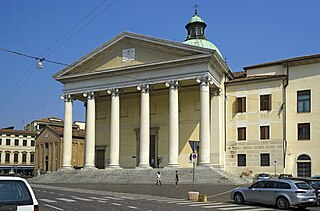
The Diocese of Treviso is Latin Church ecclesiastical territory or diocese of the Catholic Church in the Veneto, Italy. It is a suffragan diocese in the ecclesiastical province of the metropolitan Patriarchate of Venice.
The Italian Catholic diocese of Bertinoro existed from 1360 to 1986. In that year it was merged with the diocese of Forlì to create the diocese of Forlì-Bertinoro.

The Diocese of Alife-Caiazzo is a Latin diocese of the Catholic Church in Campania, southern Italy, created in 1986. In that year the historic Diocese of Alife was united with the Diocese of Caiazzo. The diocese is a suffragan of the Archdiocese of Naples.

The Diocese of Conversano-Monopoli is a Latin diocese of the Catholic Church in Apulia. It has existed since 1986, when the diocese of Monopoli was united with the historic diocese of Conversano. The diocese is a suffragan of the Archdiocese of Bari-Bitonto.

The Diocese of Trieste is a Latin diocese of the Catholic Church in the Triveneto. It has existed since no later than 524, and in its current form since 1977. The bishop's seat is in the Cathedral Basilica of Saint Justus Martyr. It is a suffragan of the Archdiocese of Gorizia.
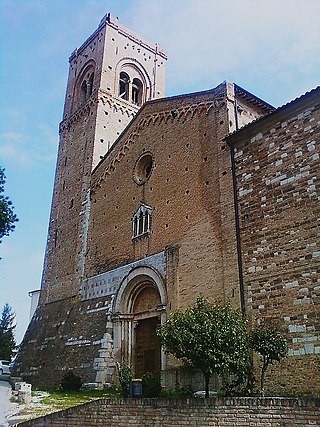
The former Italian Catholic Diocese of San Severino, in the Province of Macerata, Marche in Central Italy, existed until 1986. In that year it was united into the Archdiocese of Camerino to form the Archdiocese of Camerino-San Severino Marche.

The Italian Roman Catholic diocese of Acquapendente was an ecclesiastical territory in Lazio. The seat of the bishop was in the cathedral of Acquapendente, dedicated to the Holy Sepulchre. The diocese was established in 1649, when it was created in the place of the suppressed diocese of Castro. In 1986, along with other dioceses, it was merged into the diocese of Viterbo, Acquapendente, Bagnoregio, Montefiascone, Tuscania e San Martino al Monte Cimino.

The Roman Catholic Diocese of Ortona a Mare e Campli was a Roman Catholic diocese in Italy, located in the city of Ortona, in the Province of Chieti in the Italian region of Abruzzo. In 1834, it was united with the Archdiocese of Lanciano to form the Archdiocese of Lanciano.
The Roman Catholic Diocese of Capri was a Roman Catholic diocese located in the city of Capri on the island of Capri, in the Tyrrhenian Sea off the Sorrentine Peninsula, on the south side of the Gulf of Naples in the Campania region of Italy. On 27 June 1818, it was suppressed to the Archdiocese of Sorrento.

The Diocese of Pienza was a Roman Catholic diocese located in the town of Pienza in the province of Siena, in the Val d'Orcia in Tuscany between the towns of Montepulciano and Montalcino. Until 1462, the town was known as Corsignano. It took the name Pienza from its most famous native son, Pope Pius II, who elevated the town to the status of a city (civitas), and established the new diocese. The diocese existed as an independent entity from 1462 to 1772, directly subject to the Holy See (Papacy).
Bartolomeo Gradenigo (1636–1698) was a Roman Catholic prelate who served as Bishop of Brescia (1682–1698), Bishop of Treviso (1668–1682), and Bishop of Concordia (1667–1668).
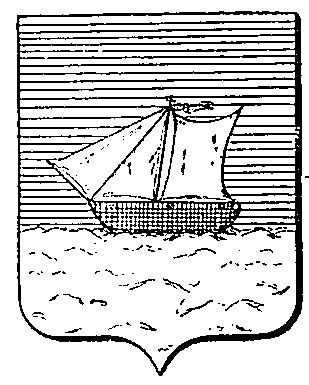
Eugène-Jean-Claude-Joseph Desflèches, M.E.P. was a Roman Catholic prelate who served as Titular Archbishop of Claudiopolis in Honoriade (1883–1887), Vicar Apostolic of Eastern Szechwan (1856–1883), and Titular Bishop of Sinitis (1840–1883).
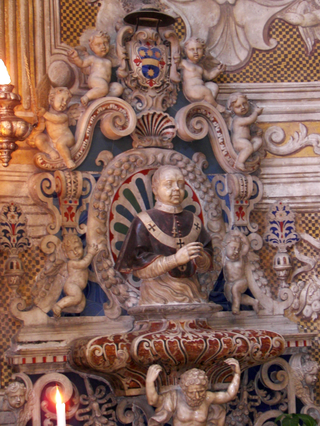
Andrea Riggio or Reggio (1660–1717) was a Roman Catholic prelate who served as Titular Patriarch of Constantinople (1716–1717) and Bishop of Catania (1693–1717).
